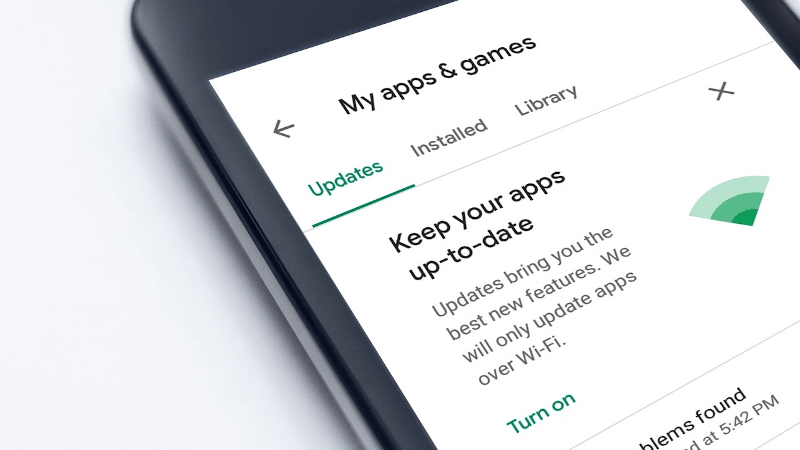
Don't Let Google Decide What Android Apps You Can Have
Up to this point, this site has been very focused on privacy. I have stated more than once that online censorship is also a concern of mine, though. In this article, we’re going to approach an issue that deals with both concerns if you have an Android device.
Google Is Removing Apps Based on Their Own Principles
As of late, Google has been threatening to or flat out removing apps from the Play Store that refuse to censor their users. The catch is that it seems like the other big tech companies are immune from this scrutiny, but the independent apps that look to compete with them are being targeted. This isn’t entirely new, but this recent push seems to have started with the social networking app, Parler, and there seems to be no end in sight.
Let’s look at a shortlist of apps that have been removed or suspended from the Google Play Store, or have at least been warned of possible removal for reasons of opposing ideologies, censorship, refusing to police their users, etc. Please note that I’m not taking a political or ideological stance here except that I believe everyone should be able to say whatever they please and, if you don’t like what they’re saying, then you can move on to another app, group, etc.
- Element (allows sexual content; since restored)
- Parler (won’t moderate free-speech and ideologically different)
- PragerU (ideologically different so Google claims misinformation)
- Husky (won’t moderate free-speech)
- Fedilab (won’t moderate free-speech)
- Subway Tooter (won’t moderate free-speech)
- Gab (won’t moderate free-speech)
- Adblock Plus (blocks ads which are Google’s primary source of income)
- Bitchute (YouTube competitor that won’t moderate free-speech)
- LBRY (YouTube competitor that won’t moderate free-speech)
- Minds (won’t moderate free-speech)
- Christ Church of Moscow, Idaho (didn’t approve of how they referenced COVID-19)
- InfoWars (ideologically different so Google claims misinformation)
- MetaMask (Google hates crypto; also, the app built on decentralized structure, which means no one can strictly control or police how the app is used)
I could go on and on.
Through the Play Store, Google is choosing, like so many other big-tech companies these days, to act as the arbiter of truth instead of just a place for Android users to find apps. Shouldn’t the consumer have the choice to use whatever apps they want? Shouldn’t a software company be able to make a communication app without having to police how the users use it? I mean, we’re all adults. No one should have to police a communication app or social network except, well, the police! Hammers are used in violent acts, but hammer makers and hardware stores are not accountable for preventing this. Google search is used for finding pirated content and many other nefarious activities, yet we do not hold Google accountable for the actions of its users.
How Can I Still Use These Apps?

The answer is YES, you can still use apps once Google removes them, and that’s what we are going to talk about now. Many Android users aren’t aware of the fact that there are other ways to install apps. I would like to point at now that not all alternate methods of obtaining Android apps are safe. Viruses exist and plenty of bad folks out there are trying to get them onto your device. With a little common sense and some knowledge of the safest alternatives, you can run any app you want regardless of how Google feels about it!
Alternate App Stores
Before you can install an app from a source other than the Play Store, you must enable installation from unknown app sources. While I feel like Google has made the language surrounding this functionality sound intimidating and dangerous, there are other sources of Android applications that can be trusted. Note that this feature is turned off by default as a safety precaution. When installing apps from other sources, always be a bit guarded, as they do not always undergo the same level of scrutiny and security screening. Some sites are spreading Android viruses, but others have earned the trust of developers and enthusiasts alike as they have established ways of providing you with safe software.
The method for enabling installation of apps from unknown sources varies between Android versions, manufacturer skins, etc so I can’t possibly list every way this is accomplished. In general, this can be accomplished using a process similar to what is outlined in this link.
While I feel that using the methods and sources I am about to list is safe, know that I do not take responsibility for anything that happens to your device if you choose to use these options. There are risks involved and you should exercise caution, judgment, and accountability if you opt into taking any of these approaches for obtaining apps from alternate sources.
There are a handful of app stores for Android that are alternatives to the Google Play store. The Amazon Appstore is probably the most well known of the bunch, but it is also the one I DO NOT recommend installing on your device! Replacing Google Play with Amazon Appstore is just replacing one evil company with another.
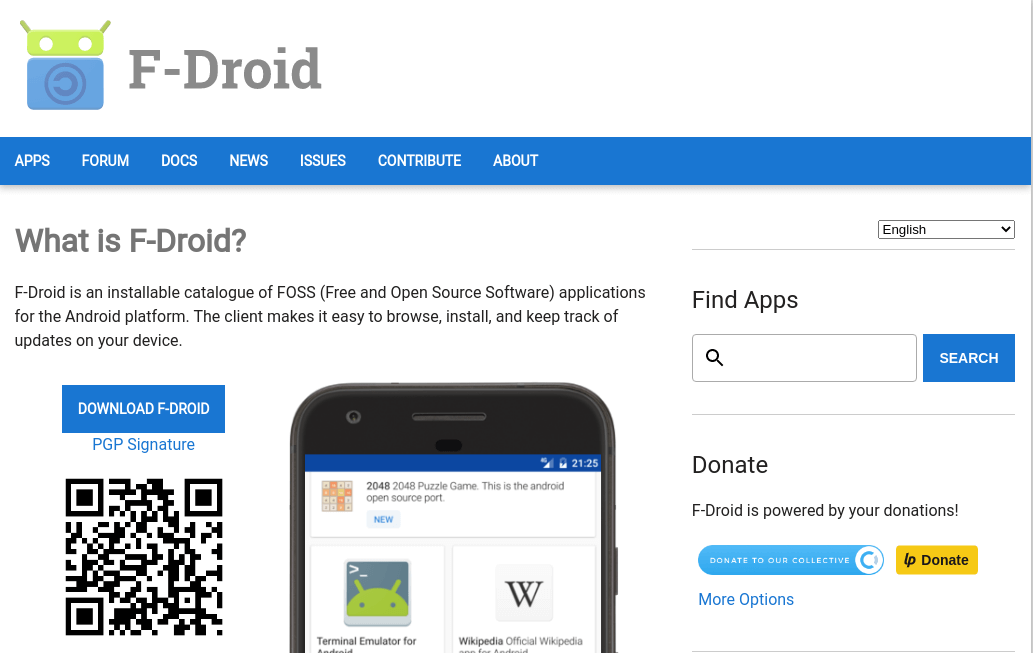
F-Droid is my favorite pick for app stores and is an open-source application that acts as a store for other open-source applications! If you aren’t familiar with the term “open-source”, it basically means that the developer(s) has the code publicly available in an online repository. You can read through it and, oftentimes, you can even branch off of it and develop your own variation without penalty. That being said, you can’t blindly trust something because it is open-source, but being that other developers can scrutinize the code, you can generally feel safer about it. F-Droid does screen apps, so as long as an app is signed by F-Droid you can trust it. All that considered, F-Droid contains a relatively small amount of applications compared to the Play Store and other stores. Still, I run a completely de-Googled Android phone and use F-Droid as my primary app store, only using other stores when I need a commercial or proprietary app.
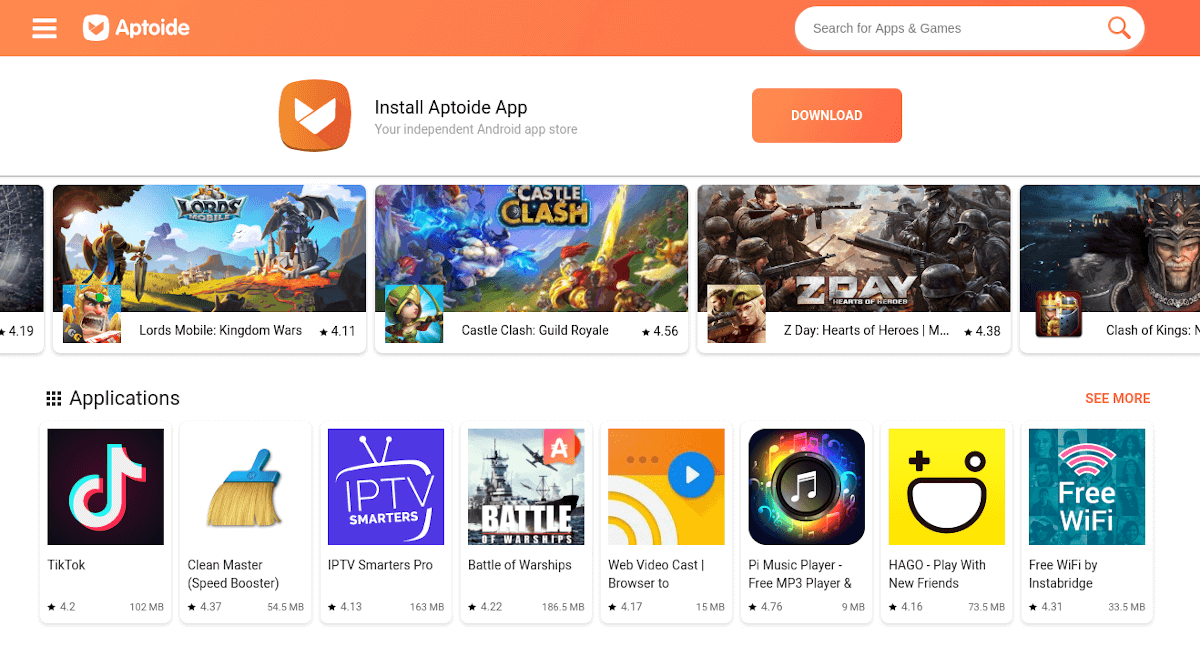
Aptoide is another Play Store alternative with a lot of apps. When I first learned of Aptoide, I questioned how safe it was to use. After a little digging, I found that according to Paulo Trezentos (Aptoide co-founder):
- Malware is something that we take very seriously. Currently, we have 3 different systems to detect malware as they arrive in any Aptoide-powered app store:
- we run 3 different anti-virus in emulators in run-time
- we have an in-house system of signatures to detect recurring threats
- we have implemented a chain of trust based in the signature of the developer
- The task of creating a safe environment to the end user is a moving target. We are working with several universities and research centres and in a recent article (not yet published) we compare well with the other app stores. We also proposed a European research project with 2 anti-virus companies and 3 universities / research centres to deal with this topic. There is a lot of work to be done and the feedback of the community is important.
- F-Droid is in fact very similar to Aptoide. They are a fork of Aptoide and they maintain all the concepts we developed, like multiple stores. They have a more centralised approach and a central signature which if of course different from our approach.
- At Aptoide we have the “Trusted” stamp. If you see the Trusted stamp in an app, we are 99.99% certain that the app doesn’t contain a threat to the end-user.
The general perception of Aptoide online is they you can usually trust apps found there. In my experience, the apps in Aptoide have a few things to help you decide if you should trust the app you are looking at. In addition to the “Trusted” stamp mentioned above, there are 4 different flags users can tap on to notify other users about the app. These are:
- Works Well
- Needs License
- Fake App
- Virus
Between the official “Trusted” stamp and the user flags, you can judge for yourself whether to trust software from Aptoide. I use it occasionally, but I am always a little extra careful and guarded when doing so. Use your best judgment!
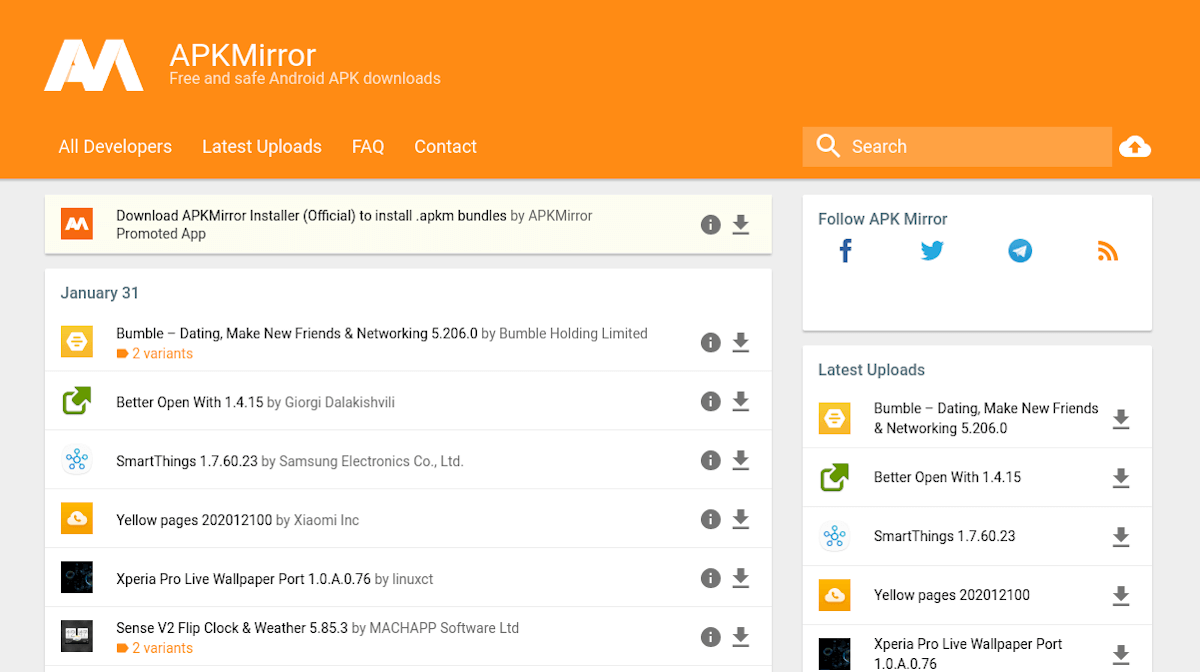
APKMirror is the last alternate source of Android apps I’ll discuss. It isn’t exactly an app store in the strictest terms, but rather a repository of Android apps. When you use APKMirror, you basically just download the APK file (the file format used for Android applications) and install it directly. The primary security mechanism used to protect users to the checking of a file’s signature against that of the original app to authenticate the publisher. This means that someone cannot list a fake, malicious app pretending to be from the original developer. It is a simple yet effective approach to ensuring the apps in the repo are safe.
Installing A Website as an App
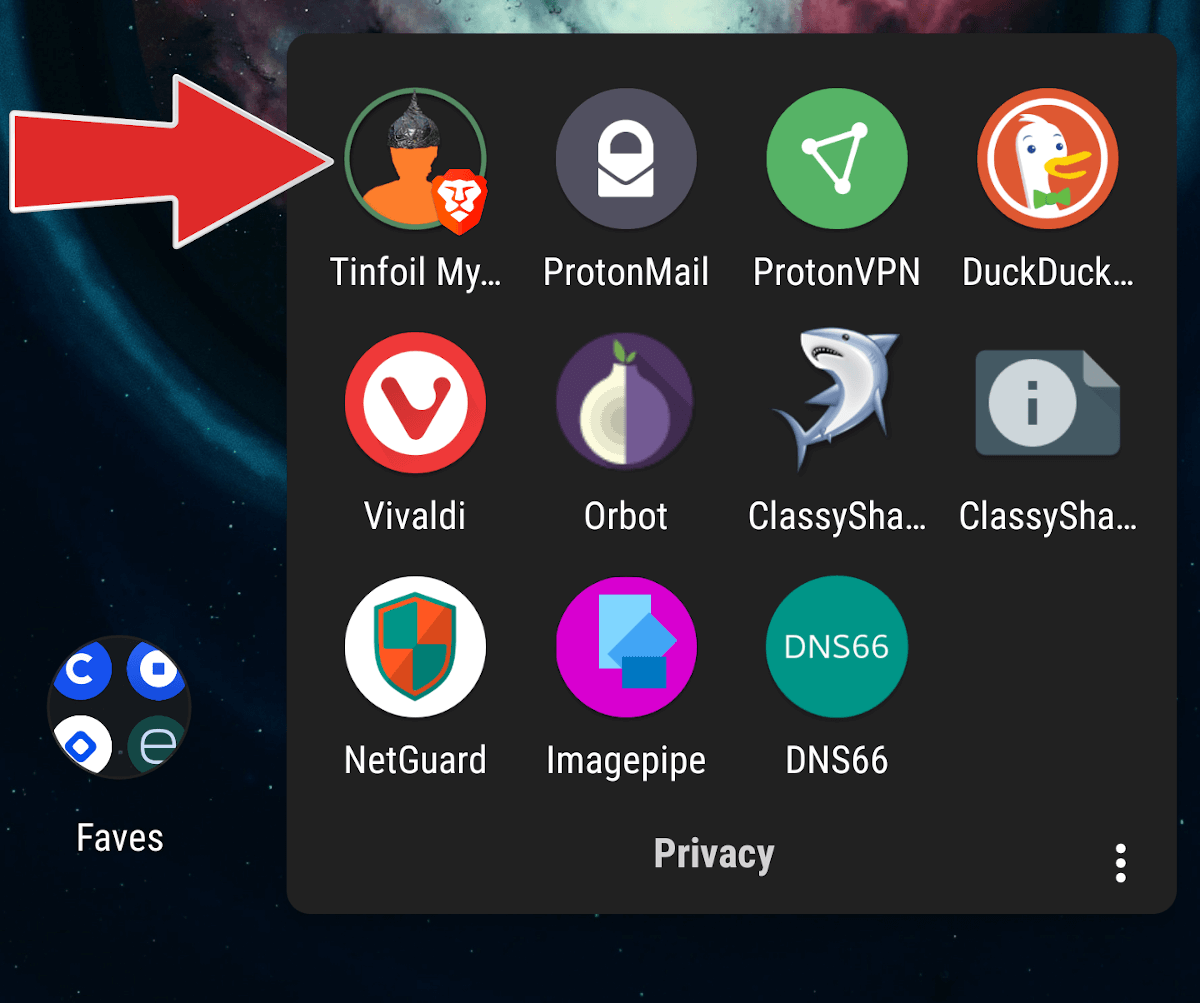
Another alternative to installing apps from the Play Store is to simply install a shortcut to the website. This method simply opens the website in your browser of choice but gives you an icon to click on as if you were launching an app. This approach offers simple convenience and ensures that you are getting the full experience the site has made available without the app. While not guaranteed to get the exact same experience that the mobile app provides, usually this approach gets you close enough to the same experience to be sufficient. Some apps like Gab (another free-speech, social network banned from the Play Store), actually tell their users to take this approach providing the full app experience through the web shortcut.
While the exact steps taken to achieve this varies from browser to browser, you can find plenty of tutorials like this one to help you accomplish this with your browser of choice. Note that instructions for Chrome are often the same for other Chromium-based browsers like Brave or Vivaldi.
Progressive Web Apps
Progressive web apps (also known as PWAs) are a somewhat newer option available to developers allowing for an even more app-like experience from a website. The difference is that PWAs have a manifest file that tells the browser the theme colors of the app, what icon to use for the shortcut, the title, and some other metadata. Other features include a mobile-first approach to website design and offline functionality (accomplished by developers using service workers). The resulting product gets a normal-looking app icon, launches in a borderless/frameless browser window themed to reflect the website’s color theme, and feels incredibly similar to the experience you get from full-blown apps you normally acquire through the Play Store.
Not all companies have taken this newer approach to their website development, allowing for their sites to be used as progressive web apps. There are extra requirements and overhead involved that might deter a company from developing their site this way. Also, progressive web apps don’t allow for the same set of permissions to your mobile device, which may also be a reason that company would apt for developing a native app. Companies like Twitter and Facebook wouldn’t want you to use their social networks via a PWA because they would not have the same level of access to collect data from your device through a PWA.
Still, several companies are taking advantage of this fresh approach to web development. Here’s a shortlist of companies that have websites that can be used as PWAs:
(Please note that I am not endorsing these apps as some of these companies are the worst offenders in privacy violations; I am simply pointing out some large, high-profile apps that have taken this approach.)
There are also stores like ProgressiveApp.Store that serves as a directory for progressive web apps.
Use Whatever App You Want Regardless of How Google Feels About It!
Don’t let Google decide what apps you can have. With all the other options available, there is no reason for you to miss out on a great bit of software only because Google has decided they don’t like it. It’s your device, it’s your choice how you spend your time, and it should also be your choice what applications you can have on your device. Just exercise an appropriate level of caution and know the risks before you proceed! Also, if an app IS available on the Play Store and you use the Play Store on your device, you should always use that as your method of installing and updating that app. If you choose to use these other methods, it should be because the app you want isn’t available on the Play Store or you have a de-Googled device and can’t run the Play Store.